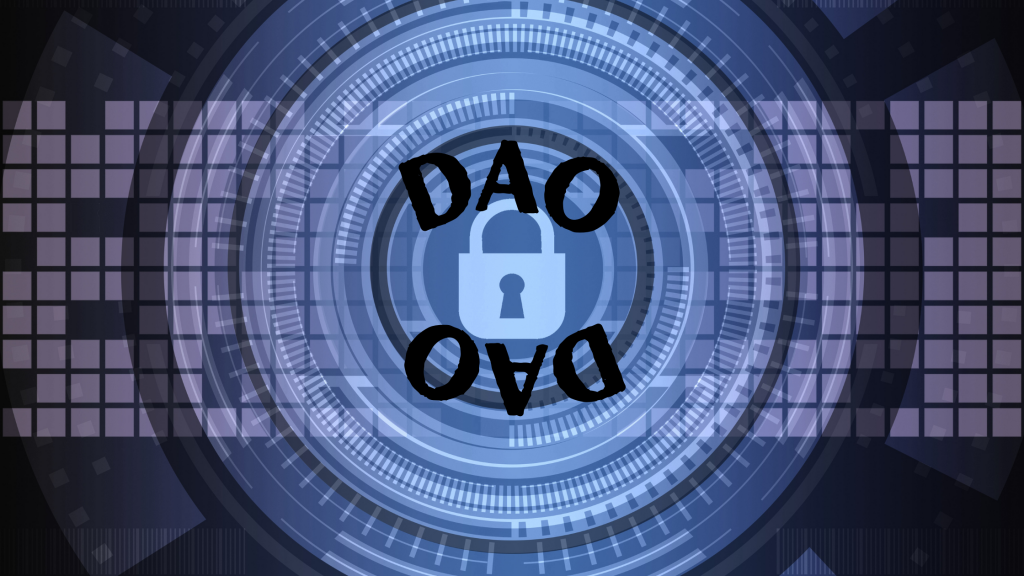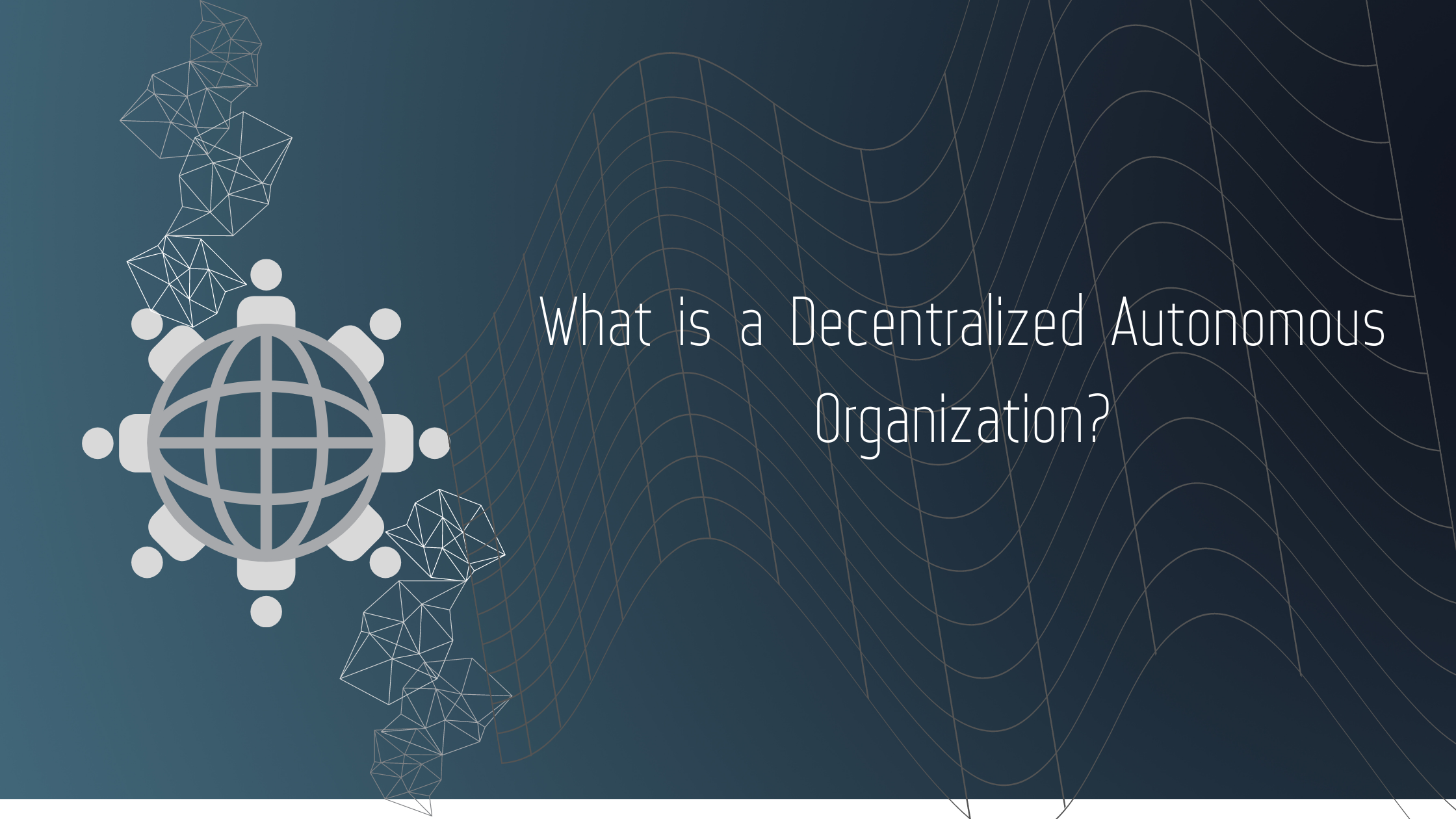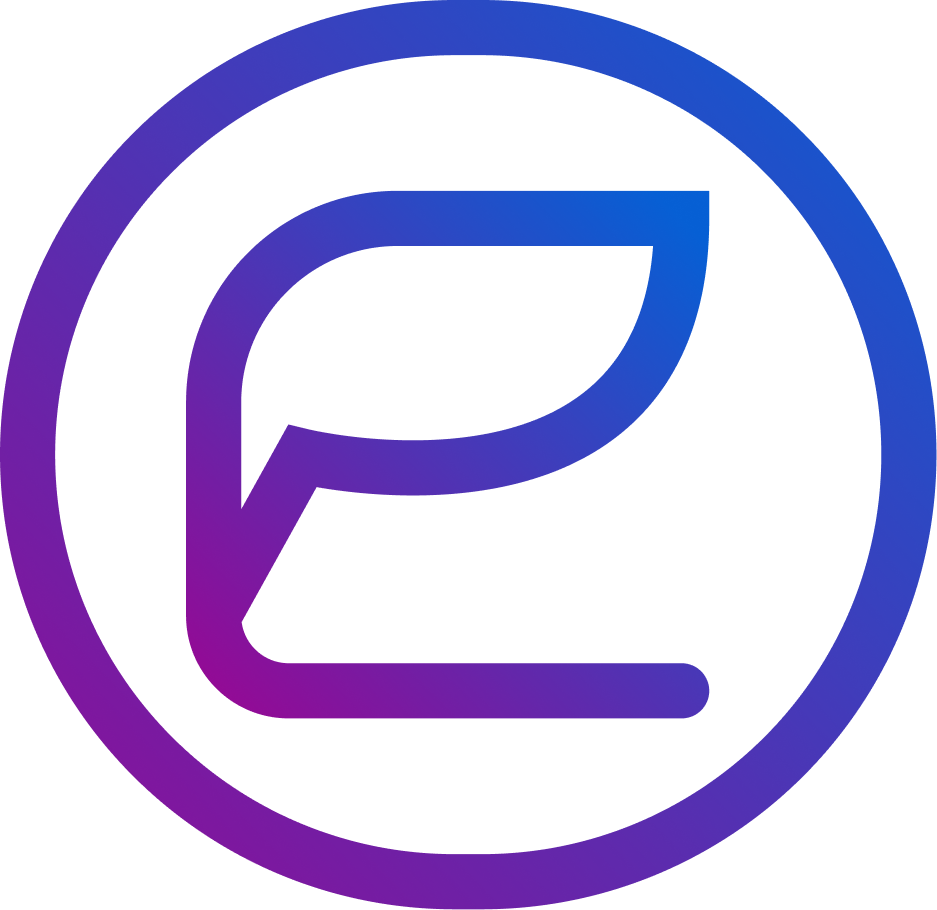Distributed Ledger Technologies (DLT) show how the digital economy can shift from a state where central persons and organizations serve as trusted parties to a state where an algorithm of decentralized consensus will assume that role. One form of DLT is blockchain.
In blockchain technology one of the concepts popularised by the Ethereum project is that of smart contracts. A smart contract is primarily a digital representation of a set of predetermined rules and processes coded into a machine or computer software. Once these rules are met smart contracts execute automatically to make decisions and perform actions.
The Decentralized Autonomous Organization (DAO) uses smart contracts on the Ethereum blockchain network to manage its trust-less environment. It also ensures management, corporate, or governance decision-making on the network. It is completely decentralized in nature and is programmed and automated with no human intervention.
DAOs growth in its diversity of use cases has been impressive with fundraising to deploying capital. Nearly $14B worth of digital assets is held by the top 20 DAOs currently from $6B in June 2021. De Fi aficionados are familiar with protocols such as Compound and Uniswap which are the largest DAOs in terms of assets and number of members.
Apart from these, there are thousands of other types of DAOs. Other industries like media (Bankless) and public funding (Gitcoin) are also utilizing DAOs to manage and coordinate their finances. The membership of DAO has increased exponentially and now stands at 1.3M members across crypto.

What is DAO?
A DAO is a blockchain-based system using a set of self-executing rules deployed on a public blockchain that allows people to coordinate and govern themselves. This kind of governance is decentralized, which means it is independent of any central control.
DAO uses a set of rules written down in code and encoded as a transparent computer program. These rules are not governed by a limited group but rather are enforced by the network of computers running on a shared software.
As the DAOs are deployed on a public blockchain they are censorship-resistant. There is no central controller in this case that can turn off the DAO and its provided service. Thus, the DAOs will continue operating as long as members are willing to execute their code.
Firstly, DAOs are considered decentralized because they rely on a serve-less decentralized infrastructure, and secondly because they rely on decentralized governance mechanisms where the decision-making process lies on the agreement of the majority of the members.
The rules governing the DAO are stored and maintained on the blockchain. The kind of rules that a company sets at the onset is put by DAOs into codes. DAO is similar to a normal physical company in many ways but the rules of the company in the case of a physical company are not enforced digitally.
How do DAOs work?
DAOs are intended to mimic a company structure where using open-source code rules and regulations are built and enforced through smart contracts. Smart contracts are rules programmed to execute once certain conditions are met and these rules are set by the DAO stakeholders.
DAO provides incentives to a distributed network of users to achieve their goals. This is done to align the interests of the organization with that of its members since there is no hierarchy in this case. DAO uses its internal capital to incentivize these members and ensure the smooth running of the organization.
DAO enters a funding phase after the rules have been decided and embedded into smart contracts. Anyone that wishes to access this DAO can participate in it. Once the funding phase has ended the DAO can be considered live and operational. Users collectively reach a consensus on proposals to take key decisions surrounding the organization.
The users that own and lock cryptocurrencies into a voting contract have the right to vote on proposals. The voting weight of users is proportional to the amount of cryptocurrency locked. Based on the predetermined network rules, the proposal is subsequently established. The voters that participated are rewarded with additional cryptocurrency.
Traditional Organizations v/s DAOs
In traditional organizations, all members and employees are bound to the organization through an employment contract which is a legal contract and enforced by a legal system. If something goes wrong or the employee breaks any rule the contract will define who is guilty in the court of law.
On the other hand, in the case of DAO the members are interacting with each other as per a self-enforcing open-source protocol. Here members of the DAO are not bound together by a legal entity or any legal contracts. Instead, members are incentivized to use network tokens with transparent rules embedded in the software and enforced by machine consensus. The behavior of all network participants is regulated through the protocol and smart contract and not through any bilateral agreement.
Traditional organizations follow a top-down hierarchy with many layers of management and bureaucratic coordination. DAOs do not have a hierarchical structure except for the code embedded in the system. Once the DAO is deployed it is independent of any central control from its creator or any one single entity. The DAO is deployed by the predefined majority of the organization’s participants.
In traditional organizations any decision regarding changes is generally undertaken by a sole party or central party or an option of voting can be considered. But the voting process is internal and handles manually. In the case of DAO proposals take the primary way for making decisions. These proposals are voted for by the majority consensus of involved users. Voters are the users with cryptocurrency and their voting weight is proportional to the amount of cryptocurrency they own.
DAO and Smart Contracts and DApps
DAO, smart contracts, and DApps are closely related to each other. DAOs are defined as an organization that runs on computer programs that are embedded as codes and are commonly known as smart contracts. Smart contracts are used to automate the execution of a predetermined agreement.
Decentralized applications are primarily computer applications that run on a decentralized computing system. DApps have close similarities to smart contracts which enable DAOs except for two differences. The first difference is that smart contracts involve a fixed number of parties and DApps have a limitless number of applicants. The second is that smart contracts are generally related to finance while that is not the case with DApps.
DApps and DAOs are quite similar in the case of governance. These apps focus on setting the rules at the onset of the company such as the voting process and management of funds and then let the company run on auto mode.
DApps and DAOs are still developing and relatively new concepts. The Ethereum network and its enthusiast are working on the development of these concepts. The two of them are very similar but have differences that set them apart.
DAO and Tokenization
Tokens are access rights given to the users of an underlying asset, platform, product, or utility commonly implemented on a blockchain. Tokenization offers a unique way for the participants to engage and motivate in an enterprise for them to act in their own and or the enterprise’s best interest.
A DAO business model improves the efficiency of the business operations through unique incentivization of its participation or tokenization. All the users within a DAO are typically required to hold a token to be able to participate in the platform governance. They will be incentivized for their contributions.
The level of the reward for the participants is dependent on their performance on behalf of the DAO’s enterprise and also the value of the token they hold. Participants have the right to leave the DAO and remove their token at any time.
Criticism of DAO
The DAO was launched in April 2016 after the crowd sale of tokens. This raised more than $15 million in funds. By May 2016 up to 14% of all ether tokens were held by the DAO. Unfortunately, in June 2016 hackers attacked the DAO based on various vulnerabilities pointed out previously. The hackers were able to gain access to 3.6 million Ether which was worth $50 million.
This hacking incident made people lose confidence in the DAO. This incident led to the hard forking of Ethereum. But as of mid-2020 the vision of DAO is back on track and had been growing exponentially as it holds a lot of promise.
Future of DAO
DAO will continue to grow with time and distribute governance. Currently, businesses in most cases cannot be governed solely by DAO but aspects of businesses can be governed using smart contracts or DApps. As a vision for the future, some of the existing businesses and new initiatives can start migrating towards DAO corporate governance model.
Many projects are Trying to achieve complete decentralization through the DAO model but we need to consider that this concept is only a few years old and have yet to achieve their goals. DAO has the potential for internet-native organizations to change the way governance works completely.
With time as the concept matures and the legal areas become clearer, more and more organizations will adopt DAO to govern most of their activities.


